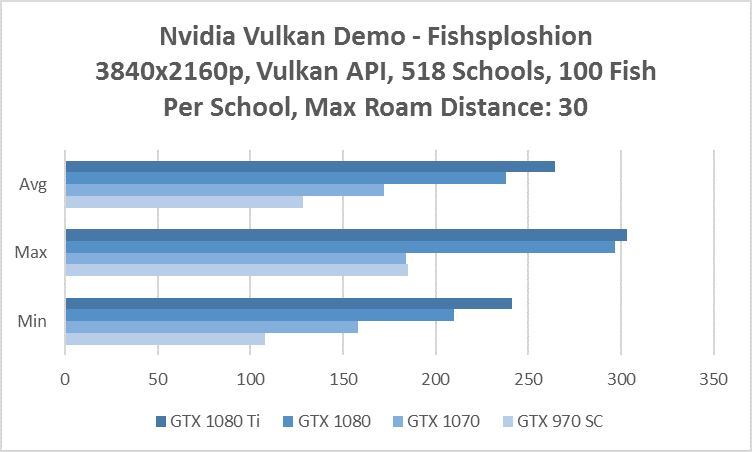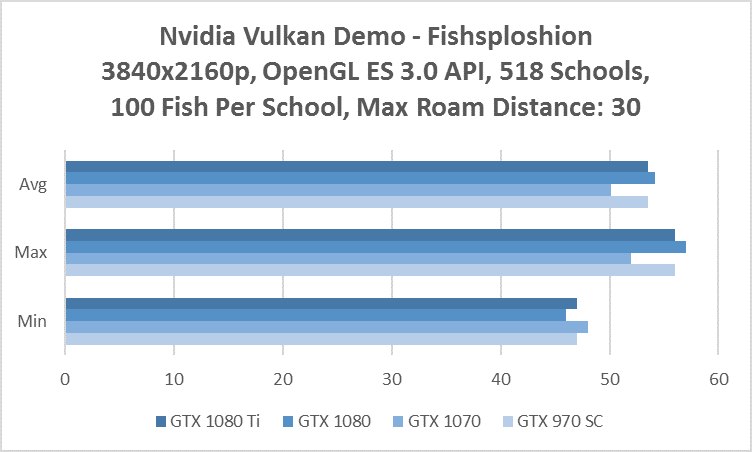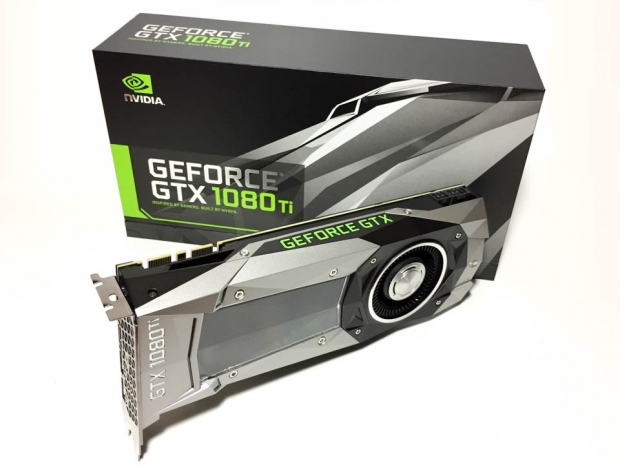Index
- Nvidia Geforce GTX 1080 Ti review
- GPU and memory overview
- Specifications, packaging and hardware overview
- Test Setup
- Results – Nvidia Vulkan API demo
- Results – Cinebench R15
- Results – Civilization VI
- Results – Just Cause 3
- Results – No Man's Sky
- Results – Far Cry 4
- Results – 3DMark + Time Spy
- Results – Unigine Heaven 4.0 Benchmark
- Overclocking
- Conclusion
- All Pages
Nvidia Vulkan API demo – Fishsploshion (ThreadedRenderingVk)
Last June, Lars Bishop from the Nvidia GameWorks developer community released a threaded rendering sample using the Vulkan 1.0 API that demonstrates how to render enormous amounts of animation data in multiple threads. In this case, the ThreadedRenderinVk demo consists of an aquarium filled with fish that can be sorted by number of schools and roam distance, allowing a user to use render a high number of moving objects with minimal draw cells. A number of buffers handle fish location and direction, making this a fantastic display that really ought to be included as a Windows desktop screensaver sometime soon.
The demo allows operation in both Vulkan mode and OpenGL ES 3.0 mode, making it a great performance comparison between Nvidia’s newer API and its predecessor. For our purposes, we ran this test in a maximized window at 3840x2160p (4K) resolution, using a sizable 518 schools of fish with 100 fish per school, and a maximum roam distance of 30.
Based on our results, the Vulkan API was able to score surprisingly high with an average of 264.2 frames per second on the Geforce GTX 1080 Ti, followed by 237.85 on the GTX 1080, 172.3 on the GTX 1070, and 128.4 on the GTX 970 SC.
Meanwhile, the OpenGL ES 3.0 API has begun to show its age in this multi-threaded demo, with an average of 53.6 frames per second on the GTX 1080 Ti, followed by 54.2 on the GTX 1080, 50.1 on the GTX 1070, and 50.6 on the GTX 970 SC.




